How to Harness Train a Cat
Harness training a cat might seem like an impossible feat, but with a little love and patience, your kitty will be prepared for an outdoor adventure in no time. Every cat is different - some kitties warm up to the idea of a leash & harness fairly quickly and are ready for outdoor adventures, while some cat's personalities just aren't suited for it. And that's ok! Whether you have plans to go on a great outdoor adventure or just want to show your cat the back yard, you know your cat best and can pay attention to their cues for signs of excitement or discomfort.
Walking your cat on a leash and harness is a great way to let your cat explore beyond the great indoors. Cats need exercise, play, and stimulation, and safely taking them for walks is a great way to do just that. Needless to say, harness training your cat isn't always easy. That's why we've put together this little guide with all the steps for how to put on a cat harness and leash train your cat.
But before we get into the dirty details, a short PSA:
Never EVER attach your cat's leash to a collar. This poses a choking safety hazard, and actually won't keep your kitty securely within reach if they're wearing a breakaway collar! Always attach your cat's leash to their harness. 100% of the time. All the time. Every single time. Got it? Ok let's keep going!
What You Need for Leash Training a Cat:
Leash training a cat doesn't require much. You will need a well-fitted harness (or cat walking jacket) and a shorter leash with some slack, or retractable leash.
We recommend starting out with the shorter leash & then working up to one that gives your kitty a little more freedom, to keep them close by while the training is taking place.
Collars are great for keeping your cat's identity information on them at all times, but never attach your cat's leash straight to their collar. This could be a choking hazard if they pull on the leash or the leash gets caught on something while walking. If you are getting your cat a collar, make sure you have a breakaway, adjustable collar made for cats, as their necks are usually smaller than dogs.
Cat Harness Training Steps
1. The most important step, always start with a kiss & a calm kitty!
When you're first introducing your cat to their cat harness, wait until they are in a good mood and feeling calm and relaxed. Ideally, they should be laying down and purring, rather than running around and playing. Do not put the harness on them when you're first introducing! See the next step 😽
2. Help them get used to the idea of a cat harness without putting it on.
Bring the harness out & simply lay it on the ground near your cat, giving them some treats to immediately form positive associations with this new foreign object. If your cat has had a negative past experience with a harness, they might need a few days of warming up to it before they learn that the harness being out, does not mean that it is automatically going on them. In order to get rid of this bad association with the harness, let them warm up to it at their own speed, just by leaving it out for them to approach on their own. Immediately reward with treats when they approach it, and if they seem disinterested in it, try placing some treats on top of the harness to attract them to it.
Stay in this phase until you are able to pick up the harness & put it down without them noticing. This process usually takes a couple of days - not hours - if you really want your cat to get used to the harness's presence.
3. Show the harness to your cat.
You can do this by showing it to them, letting them sniff it, and testing out all of its functions near them, without them in it. This will get them familiar with the smells, sounds, and feels of the harness before putting it straight on them. If they go to approach the harness without being prompted, toss them a treat to just keep those good associations building.
Even though this process can be tedious and drawn out depending on how quickly your cat familiarizes with their new harness, never ever put your new harness straight on your cat without letting them get accustomed to it. That will only turn them off from wearing it, and will make the whole process take longer. Trust us. Patience is key here! If your cat has a good association with the harness & has readily approached it/interacted with it, then it's time to move on to the next step!
4. Put the harness on your cat while indoors, and let them test it out before venturing outside.
Put the harness on your cat, but don't buckle it shut. A great time to do this would be right before mealtime, so they are distracted by their food and create positive associations with wearing the harness. If your kitty looks happy & comfortable during this step, after a little while, you can fasten the harness & adjust the straps to ensure it fits them. It should be snug, but not so tight that it digs in to your cat’s sides. Immediately reward your cat with praise and their favorite treat. Watch the video below to see how to put on a cat harness:
Your cat could likely slump over or try to squirm out of the harness. Don’t be concerned — they are merely reacting to a strange, new object being on their body. It's a totally normal! Continue to reward your cat with petting and treats (or whatever they respond to best). If they seem extraordinarily uncomfortable, take the harness off, and try again the next day. Do not try to attach their leash at this point - that step is coming up later!
5. Each day, keep the cat harness on your cat for a little bit longer.
To help normalize how your cat feels in the harness, engage them in some of their favorite daily activities: feed your cat while they wear the harness, and play with them with their favorite toys. They will slowly get used to the feeling. Let them sit in this stage for a little while, just having them wear it around the house doing all their normal cat things. You want the harness to become a part of every-day life!
Do not rush adding the leash, clipping your cat into their cat backpack, or leash walking them outside. The more time you give your cat to adjust to wearing their harness indoors on its own, the easier everything that follows will be.
Playing with your cat while they're wearing their harness is a great way to help them get used to it!
@travelcatshop Wearing the harness during playtime will help them get used to moving around in it while doing something fun! #travelcat #catharness #cattrainingtips ♬ original sound - Your Cat Backpack 😸Travel Cat
Can you take cats for walks?
Absolutely! We love disproving the notion that cats are meant to stay indoors. Cats love to explore! Walking your cat is a great way to give them a daily dose of enrichment, stimulating their mind & heightening those predatory hunting senses that don't get exercised as much at home.
Walking your cat is a great way to stave off boredom & help them use pent up energy! You might even find them sleeping better & less likely to get into things they shouldn't by giving them a chance to embrace the wild side outdoors with a walk.
Can you train a cat to walk on a leash?
While cats might seem uncomfortable in their harness or with the weight of a leash behind them at first, you can absolutely train your cat to get used to this feeling following the steps provided above. Once they are adjusted to the feeling of their harness & leash, you can begin training your cat to walk with it on. It just takes a little time, patience, and lots of kisses of course! Let's find out just how to train your cat to walk on a leash, so you can explore the great outdoors together at last:
How to train your cat to walk on a leash.
1: Once they are adjusted to their cat harness, start leash training indoors.
You will know they are adjusted to their cat harness when they start walking around in it like normal. Attach the leash to their harness & walk around behind your cat with the leash loose in your hand, so there isn't any tension, then drop the leash & let it drag behind them so they have a feeling of slight tension. Start out leash walking indoors for a few days so they can get used to the feeling of the leash being attached to their cat harness before venturing outside.
2: Begin cat harness & leash training outdoors!
With the cat harness on & leash attached, open your door on a nice day. Let your cat observe the outdoors and then carry your cat outside before setting them down. If you toss treats out the door to lure them outside, they will think of going outside on their own as a good thing - and no one wants to train a kitty to door dash! Keep your cat safe & always carry them outside initially, in order to discourage them from walking out on their own.
Explore the areas around your home first, so your cat can get familiar with all the smells & sights of their territory. Remember, you want to work up to longer walks gradually. Don't force your kitty to walk further than they want to - you want leash walking to be a pleasant experience for them that they will want to do again & again! After your cat is thoroughly familiar with the outside of your home/apartment building, feel free to venture further if your kitty feels eager to explore. Start with a short stroll around the block and slowly build up to bigger adventures if they seem comfortable!
The earlier you can start training your cat in the cat harness, the better — but it's also never too late to try. Remember, only you know your cat best, and every cat is different. Don't get frustrated with the process, patience and consistency are key whenever it comes to new things with pets!
Cat Walking Harness Types
If you didn't already have a cat harness, now is the time to get one! There are many different kinds to choose from, but the three most popular styles are the "H-Style", "Vest Harness", and "Step-In".
H-Style Cat Harness
Like the name suggests, this cat harness has a band around the tummy & another around the neck, connected by another strap in the middle to form a sort of "H" shape. This style of cat harness is made of the same material/thickness as most collars, with adjustable buckles. Our H-Style harness is called "The Day Tripper", and comes in three fun patterns!
The Day Tripper Harness in Watercolor
Vest Cat Harness
The vest style harness loops around your cat's neck & tummy, leaving space between their front legs for flexibility & movement. These harnesses are also made out of similar material/thickness to collars, but some come in a padded mesh material as well! We have two vest harness options, "The Pathfinder" Cat Harness with GPS Tracker Pocket and "The Stray x Travel Cat" Vest Harness.
Step-In Cat Harness
Step in cat harnesses are the softest & most comfortable option for your cat, designed for very little chance of escape. They are typically made out of a padded material, with clips or velcro that fasten on your cats back or tummy. We offer a wide selection of colours and patterns in our classic reflective harness style, "The True Adventurer" Step-In Cat Harness
Best Cat Harnesses for Leash Walking

"The True Adventurer" Cat Harness & Leash Set is our custom designed vest harness made for leash walking. Confidently take your cat out walking, training, hiking and exploring the great outdoors with this adjustable, breathable harness and leash set. This cat harness has two ways to adjust; with its velcro fastener and plastic adjustable clip, so you can make it comfy with room for your cat to grow while still ensuring a snug & safe fit.
Another option is "The Day Tripper" Perfect Adjustable H-Style Cat Harness: which gives your kitty more freedom and flexibility while they’re out exploring. This is a good option for cats who like to climb, pounce, run, and move around like the little balls of energy they are.

Worried about your fur baby running off and getting lost? In that case, you may want to try "The Pathfinder" Cat Harness, which comes with a GPS tracker pocket. Then get your paws on Tractive’s GPS Pet Tracker: a waterproof device you can slip into your kitty’s harness pocket to get location updates no matter how far away your fur baby might be. You can even see their location history, activity levels, and calorie burn!
If you’ve played Stray, you might enjoy the Stray x Travel Cat Harness & Leash Set, which is a replica of the one worn in the game. In addition to being super cute, it’s designed to keep your kitty safe and comfortable while out on adventures.

Pro Tip: Measurement for our cat harness is done around your cat's chest. You want your cat's harness to be snug and fitted so they can't get out of it. When you take the measurement, make sure you're getting close and tight up against your cat -- down past all the floof! If you're between sizes, go for the bigger size if your cat is still growing, or the smaller size if they are not. For our in-depth sizing guide, click here.
The reflective strip on our cat harness enables you and others to safely spot your fur baby from afar, even when it starts to get dark. The strong nylon leash is the purrfect length (3.9 ft.) to let your cat explore things while you’re still in arms reach.
"The Captain" Retractable Leash for Cats is a great addition to these harnesses, giving your cat more freedom to roam while still being in your control. It clips right to the sturdy snap clip, which is constructed with premium quality metal alloy and features a 360-degree rotation to adjusts to your cat’s every move.

You can pair these harnesses with any of our cat backpacks - all of ours have a clip you can use to attach one! Attaching your cat's harness to a backpack is the best way to ensure that they wont run off when a wave of outdoor inspiration hits them!
Our original cat harness design now comes in two limited edition patterns!
Let your cat's inner hippy shine with this unique, limited-edition tie dye harness. The psychedelic pattern brings all the outdoorsy vibes to wherever your adventure takes you - whether that's for a soul-searching hike, or a skip around the block. It also features rose gold hardware for your super trendy kitty.
We know you like to spoil your cat, and let's be honest, they love it. All of your extra green already goes to your kitty anyways, so why not make it official? This limited edition version of our harness comes with the green cash flow pattern, along with gold hardware because your kitty is that extra.
FAQ
How long does it take to harness train a cat?
Every kitty is different, but for the best results we recommend training your cat in short, consistent spurts over the course of several days. It might seem like a painstaking process to draw it out, but it is better for your kitty's attention span & will end up helping form a good association between your cat & the harness. Lengthy training sessions could overtire your cat & make them even more hesitant to wear the harness.
How tight should cat harness be?
It is always better for your cat's harness to be more on the snug side than too loose. When measuring for your cat's harness, make sure to measure tight against your cat, past down all the floof. If you are between sizes, opt for the smaller size to give them a more secure fit. This will make it less likely for them to escape, and will be more comfortable instead of the harness feeling too bulky!
How do you get your cat used to their harness?
The most important step in harness training is to form a good association between your cat & the harness. Treats, kisses, and positive reinforcement go a long way! You could even add some new toys to the mix to keep your kitty happy. Remember to keep training sessions short & sweet. Every cat will take to their harness differently, but starting out with the steps we've outlined in this article is sure to get your cat off to a happy start with harness training!
We hope that this step by step guide for harness training a cat was helpful. If you have any other questions about how to put on a cat harness, leave us a comment or send us an email. We love getting in touch with cat-venturers!
SHOP CUSTOMER FAVORITES
MORE CAT TRAVEL RESOURCES & FUN
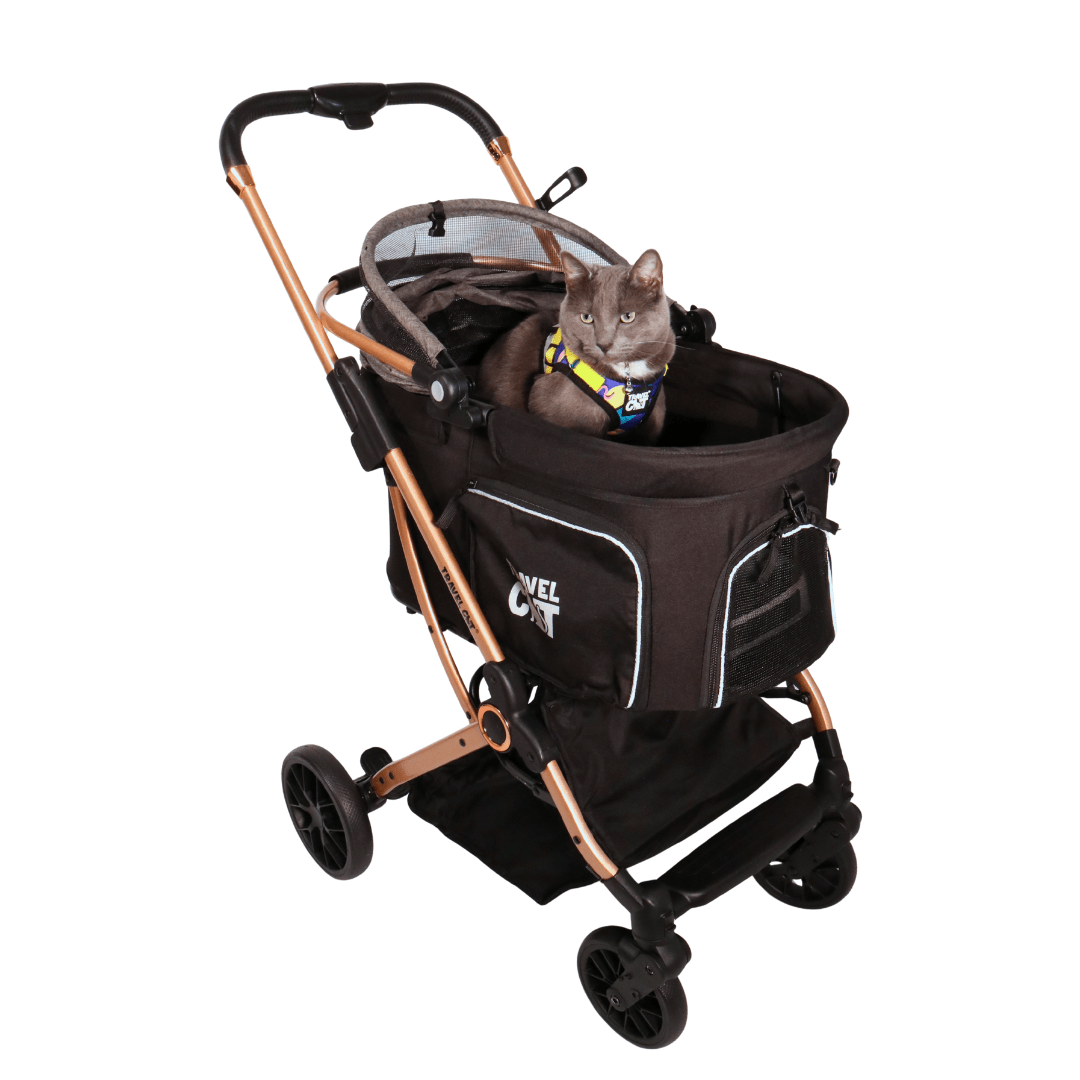
How to Get Your Cat to Love the Stroller
(Without bribes, begging, or betrayal) Let’s face it — cats aren’t known for embracing change. New toys? Suspicious. Rearranged furniture? Offensive. So when it comes to something as bold as a cat ...
Read more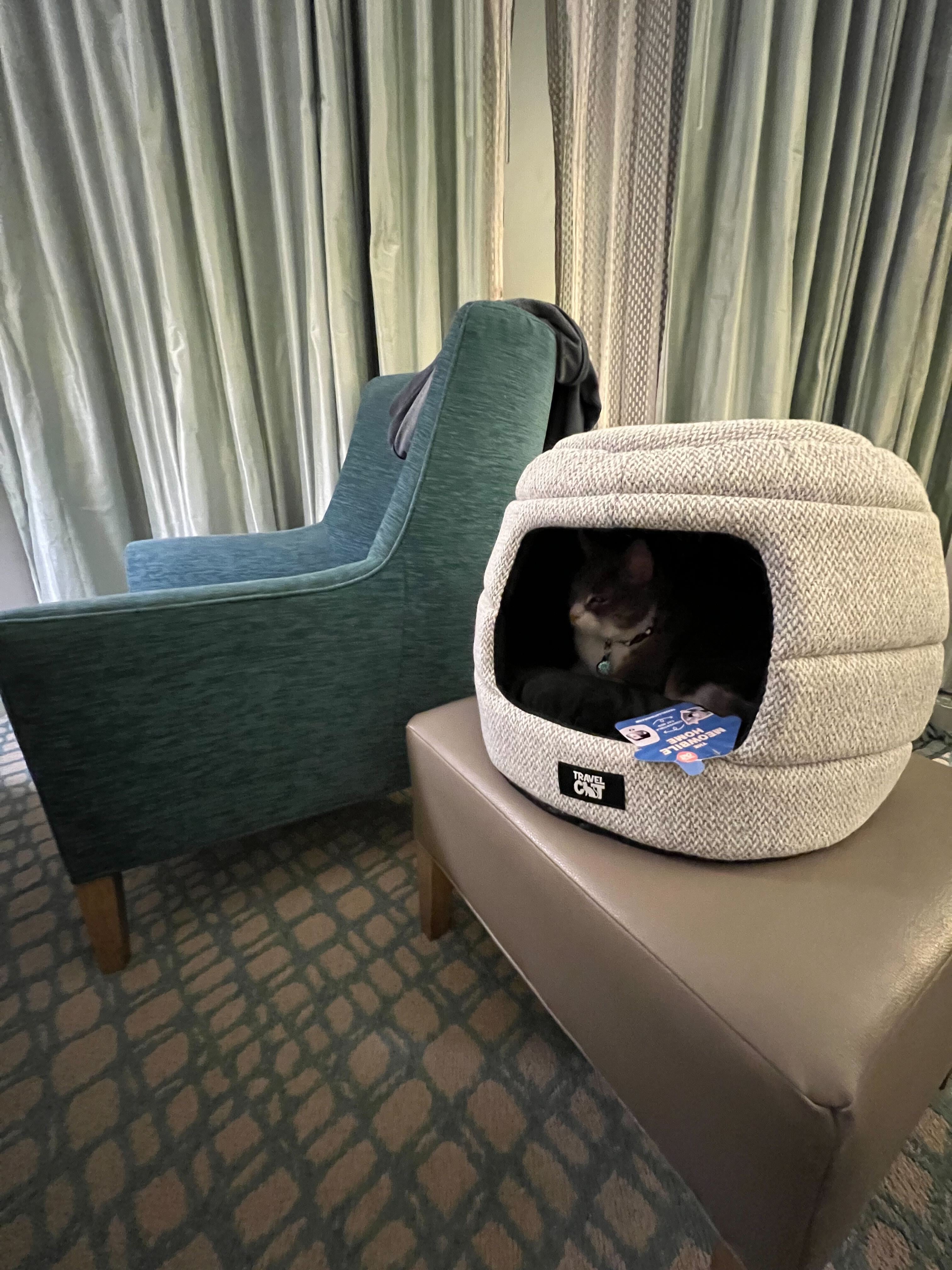
The Ultimate List of Cat-Friendly Hotels in the U.S. - More Than Just Pet-Friendly
Discover the best U.S. hotels that truly welcome cats. From big chains to campsites, this is the ultimate cat-friendly stay guide.
Read more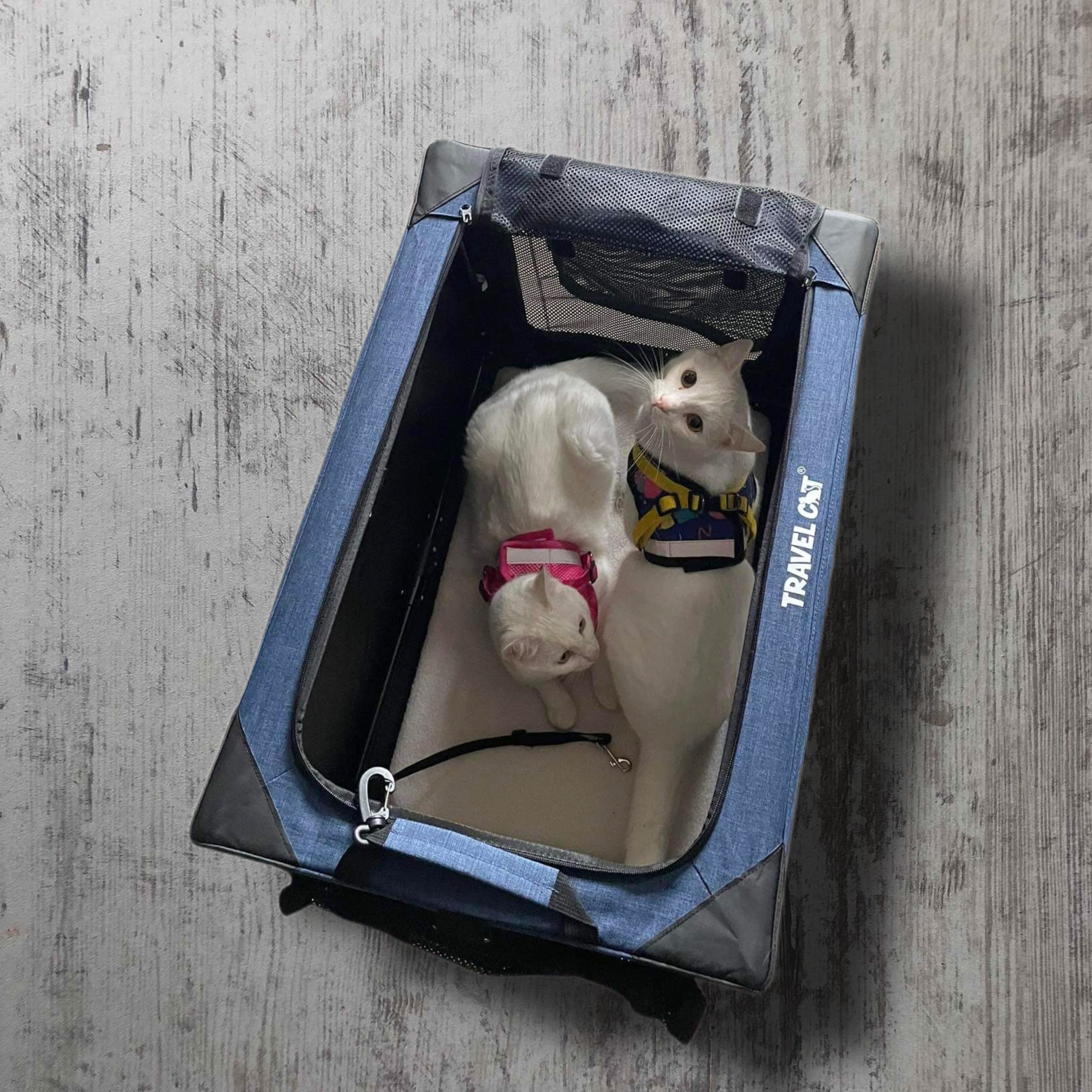
Your Purrfect Guide to Holiday Travel with a Cat: How to Take Your Pet with You Stress-Free
Whether you’re heading home or to a far off vacation, bringing your kitty along can be a challenge. But don’t worry—we’ve put together some trusty tips for traveling with your cat during the holidays.
Read more
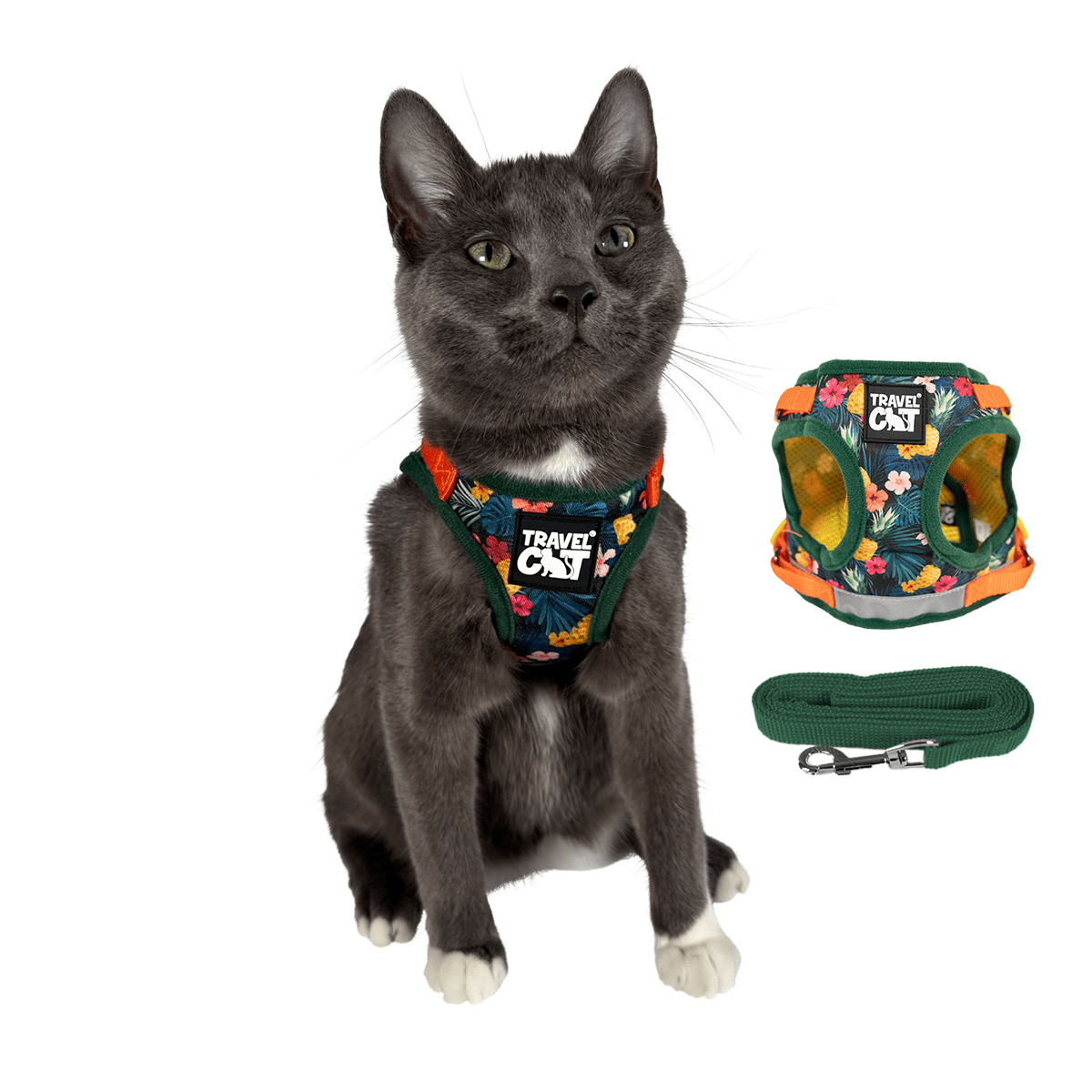
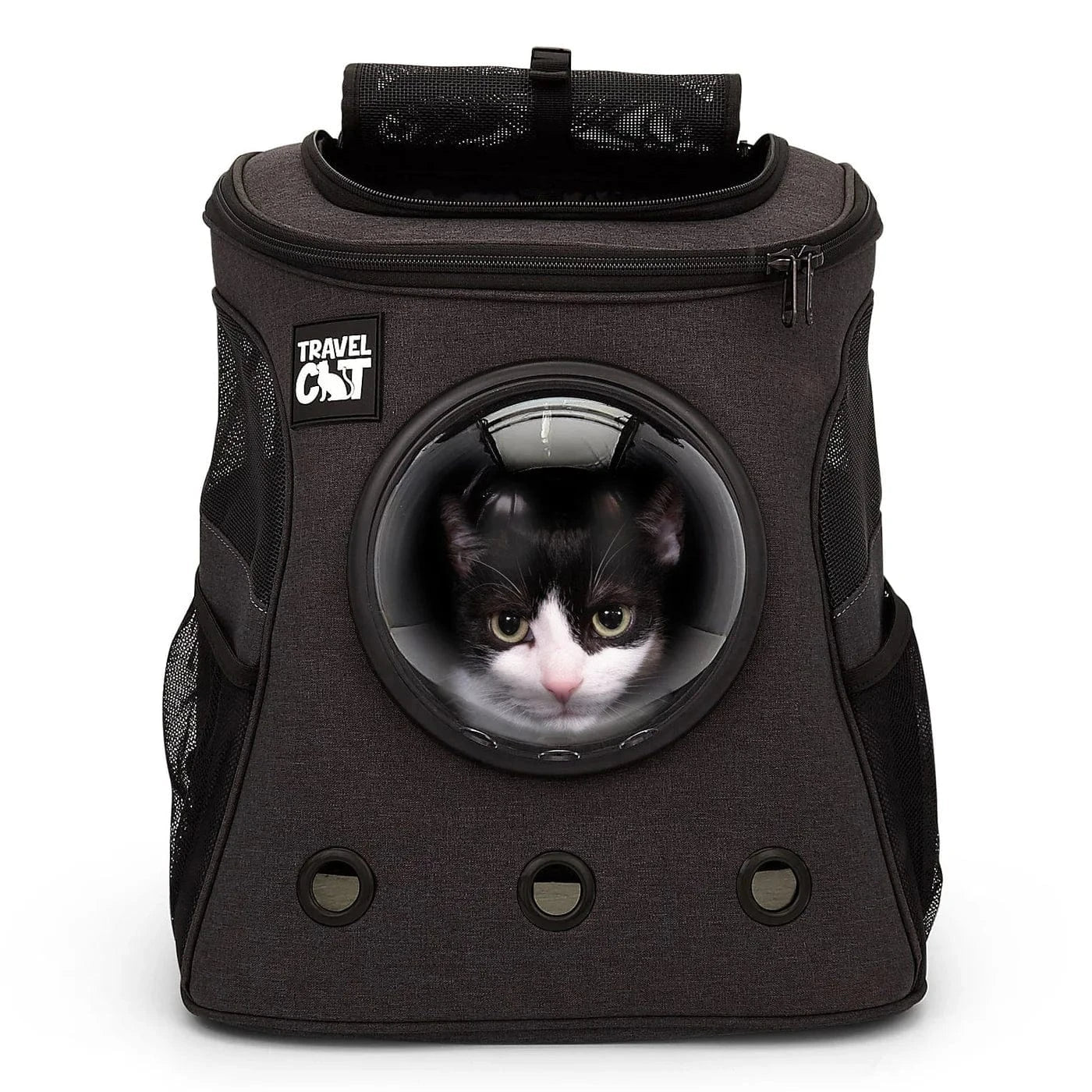



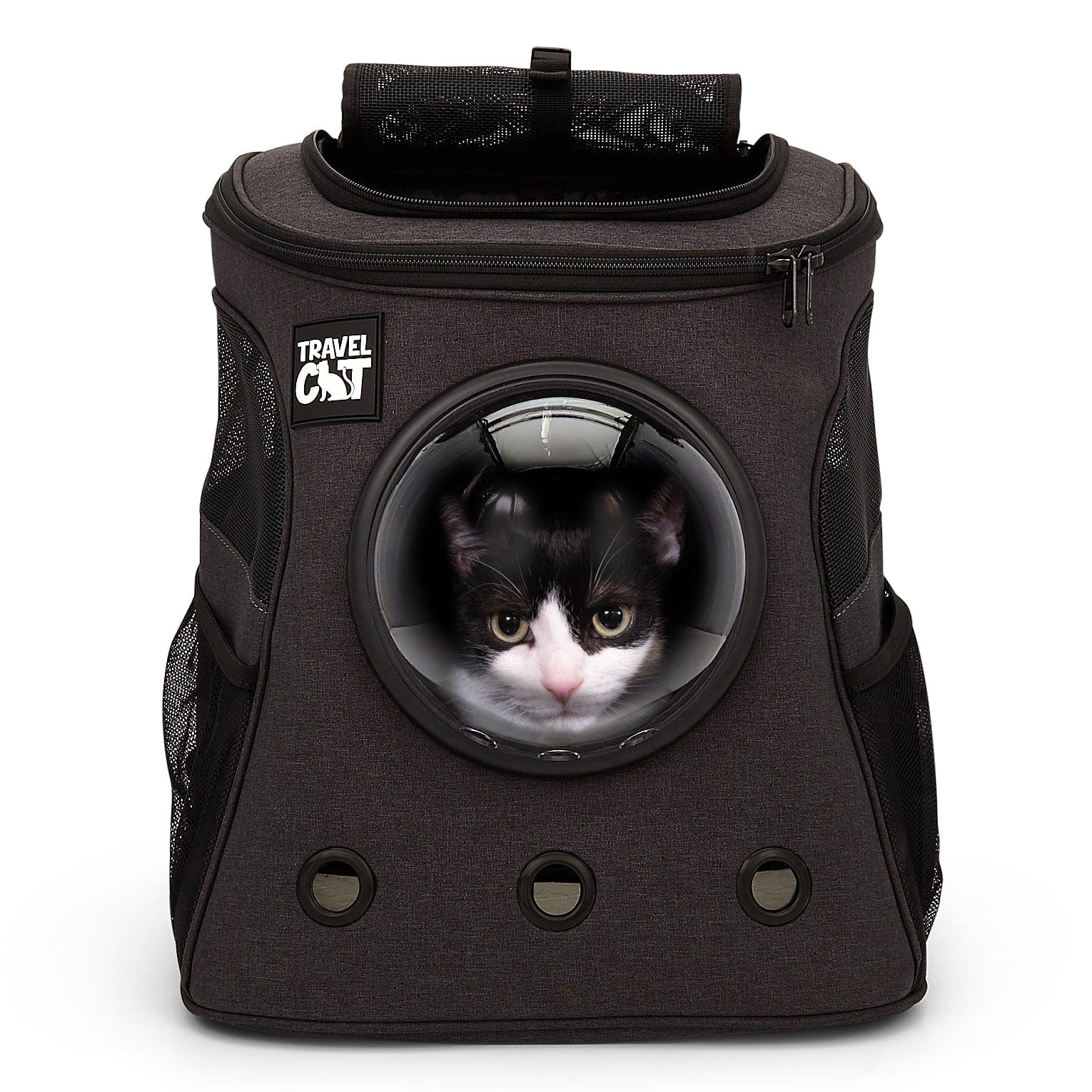
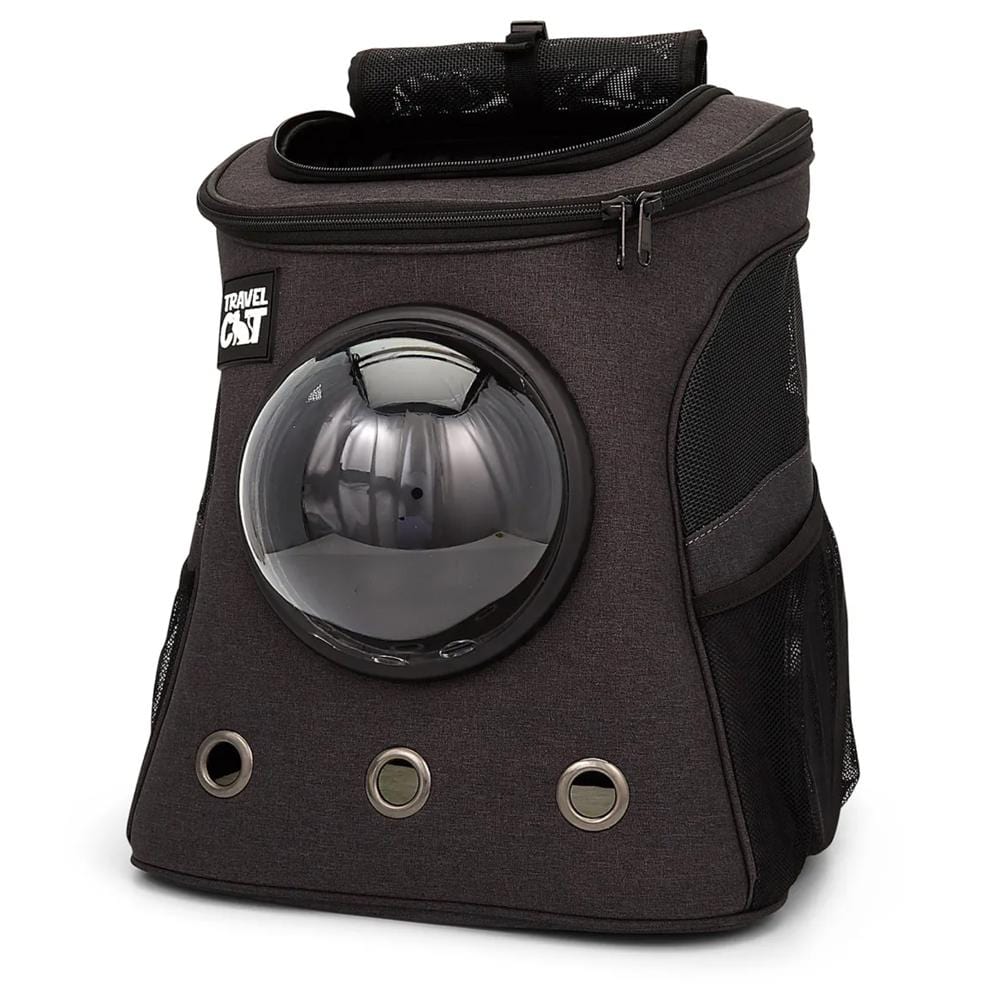
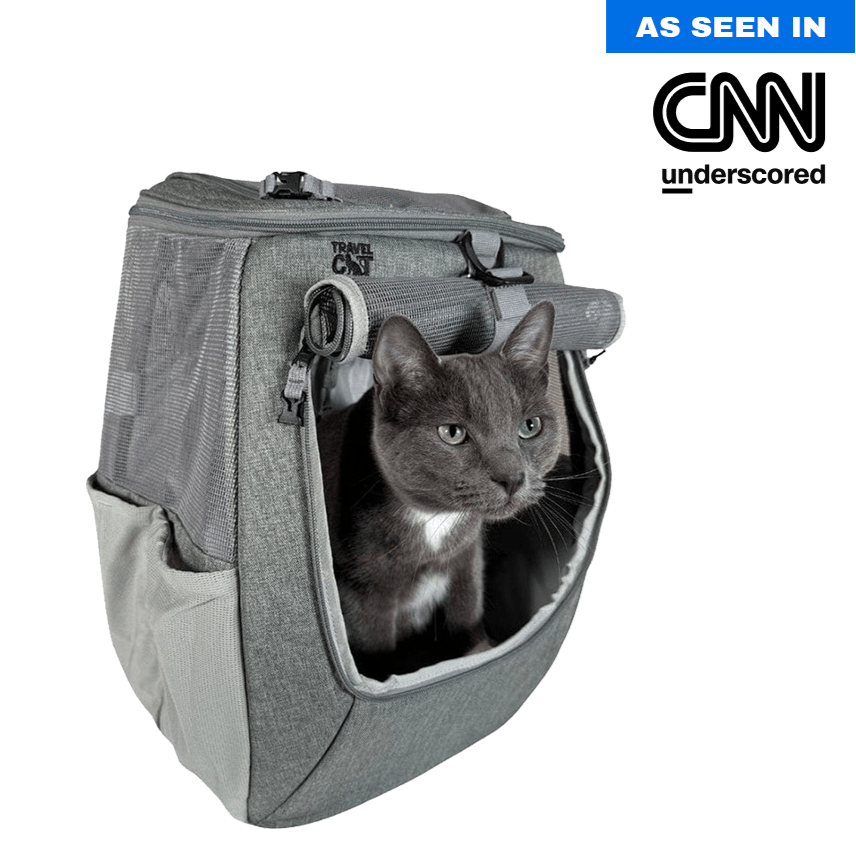
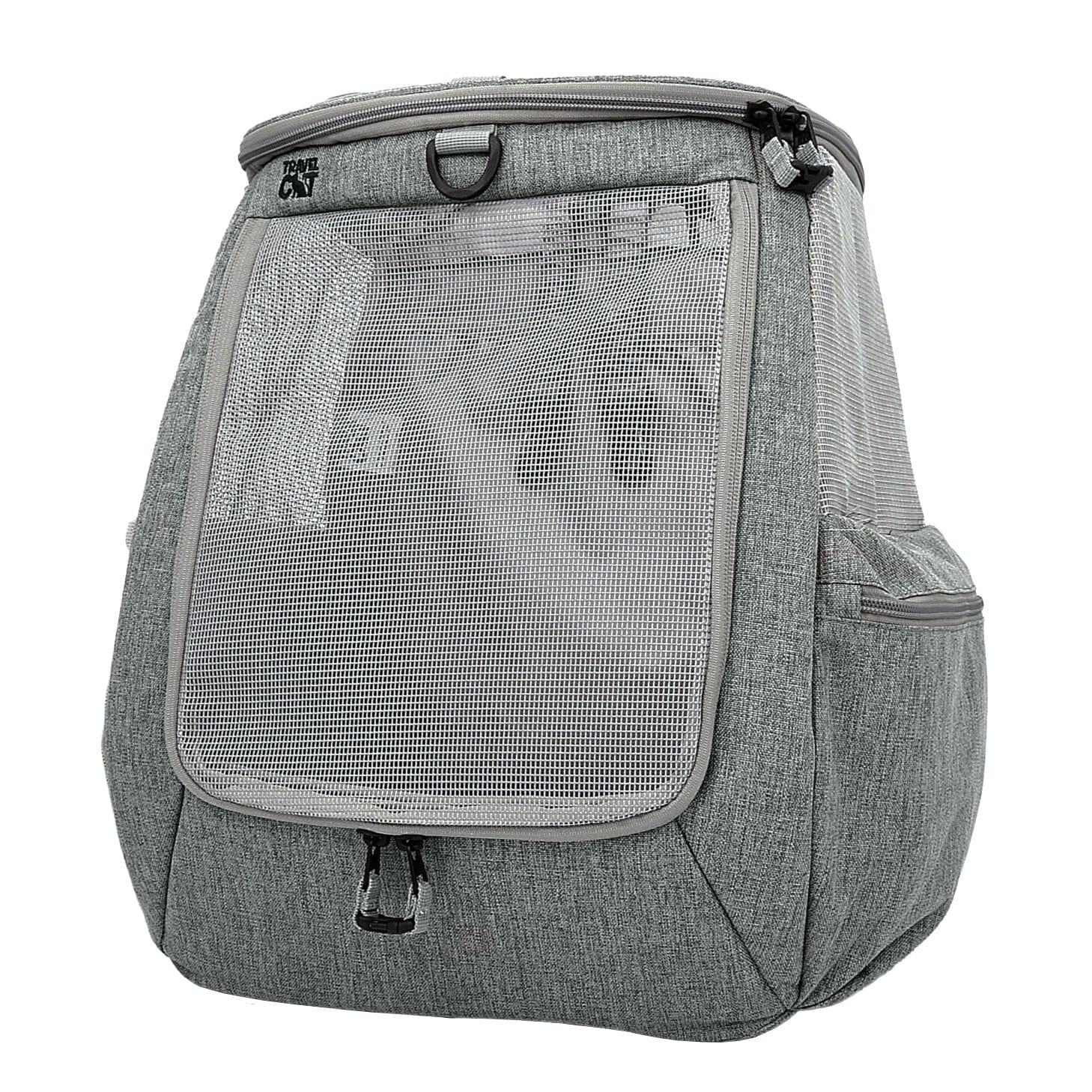
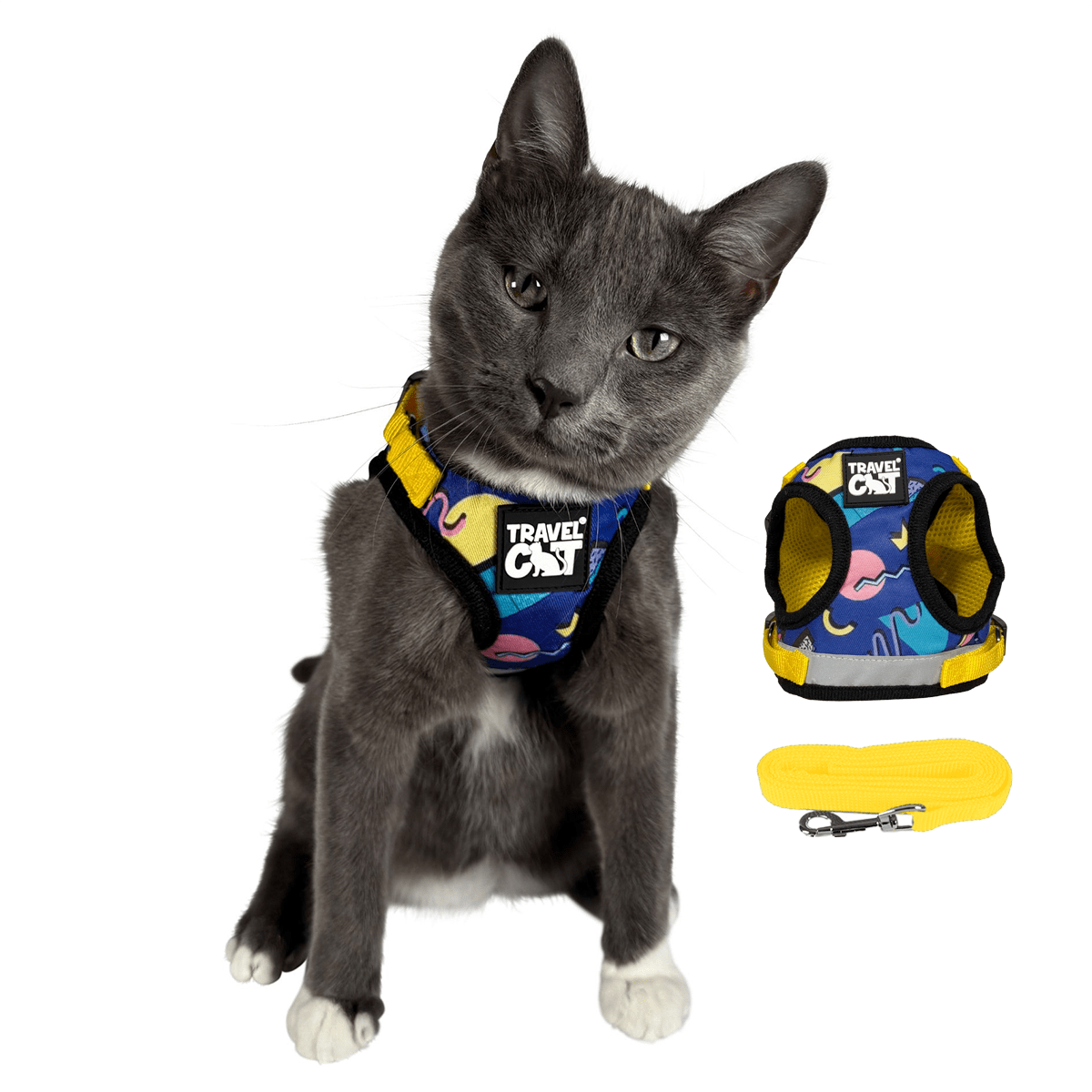
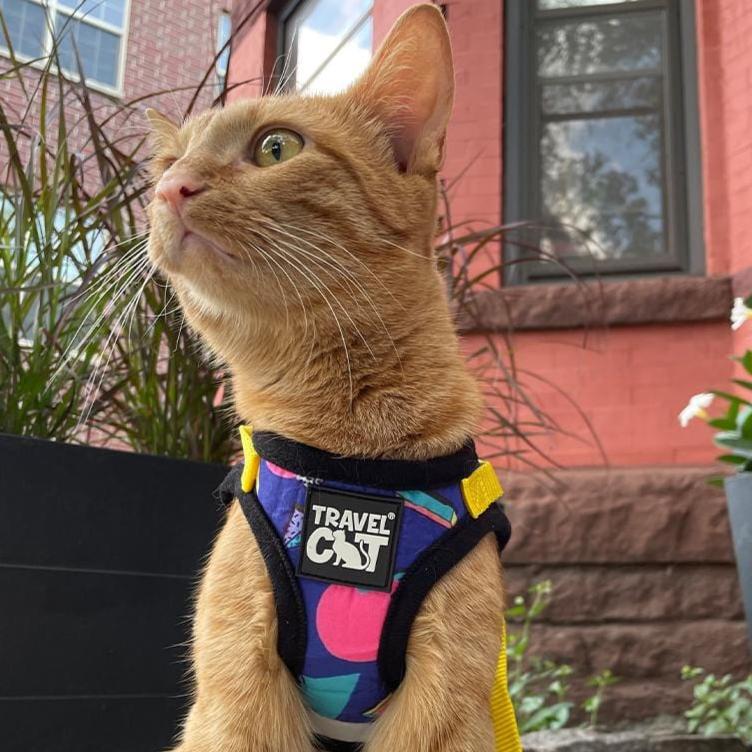

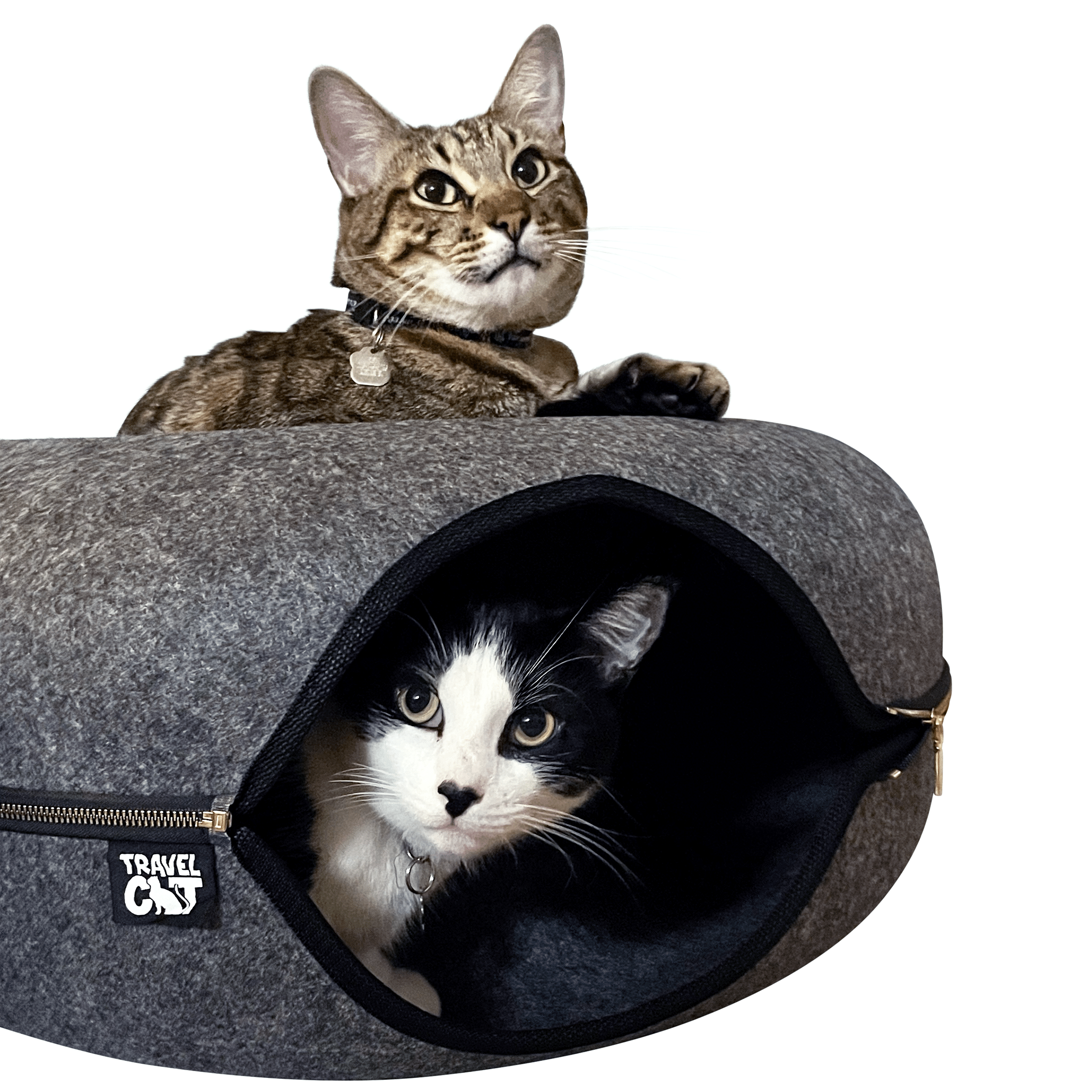

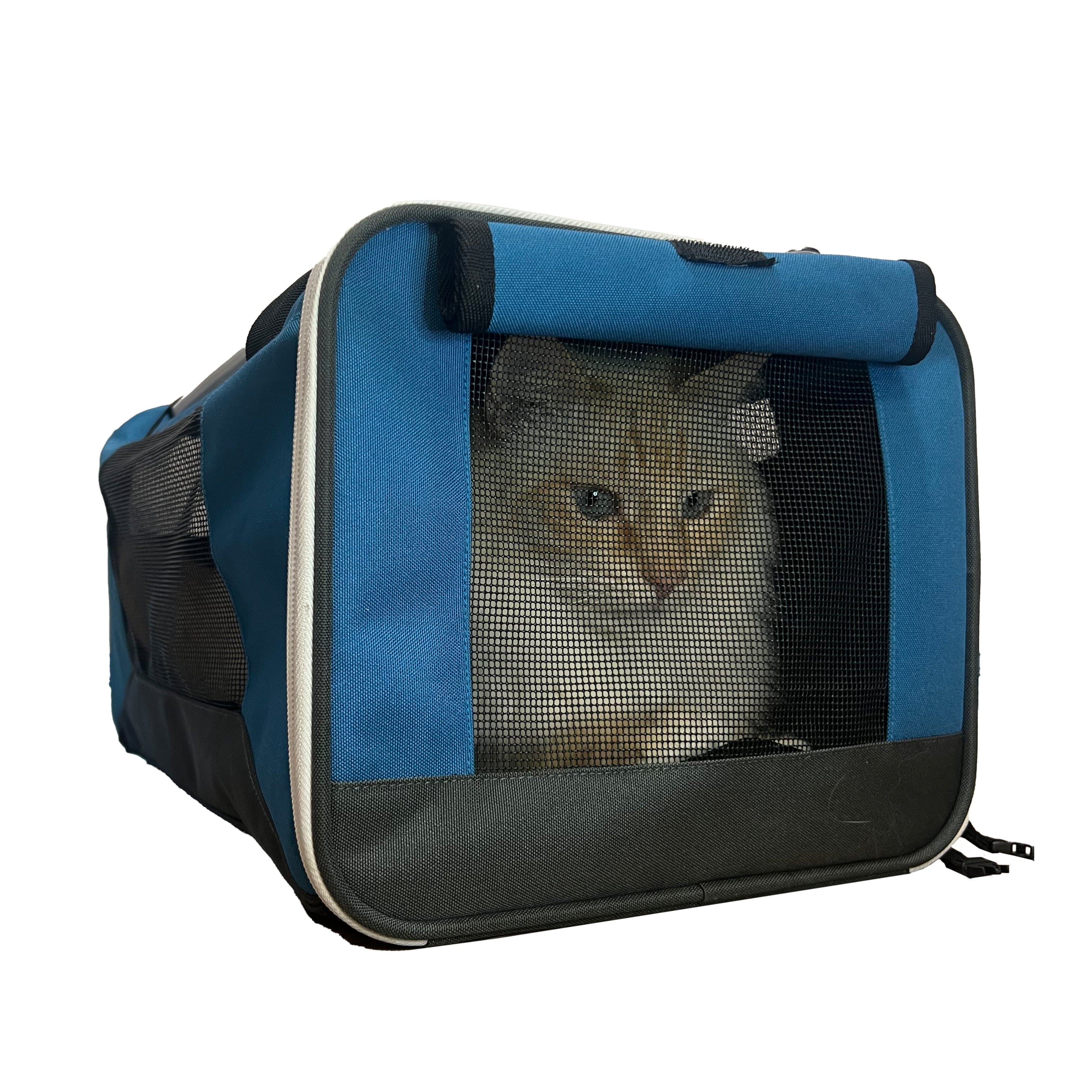
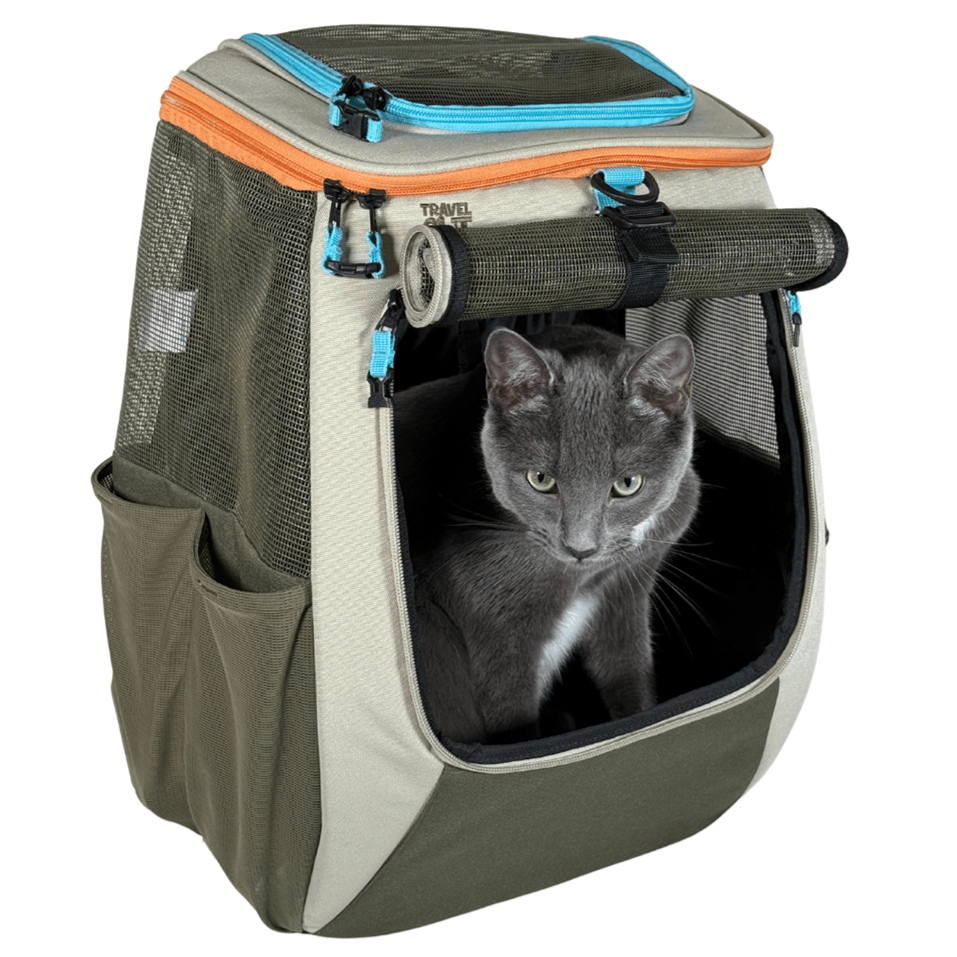
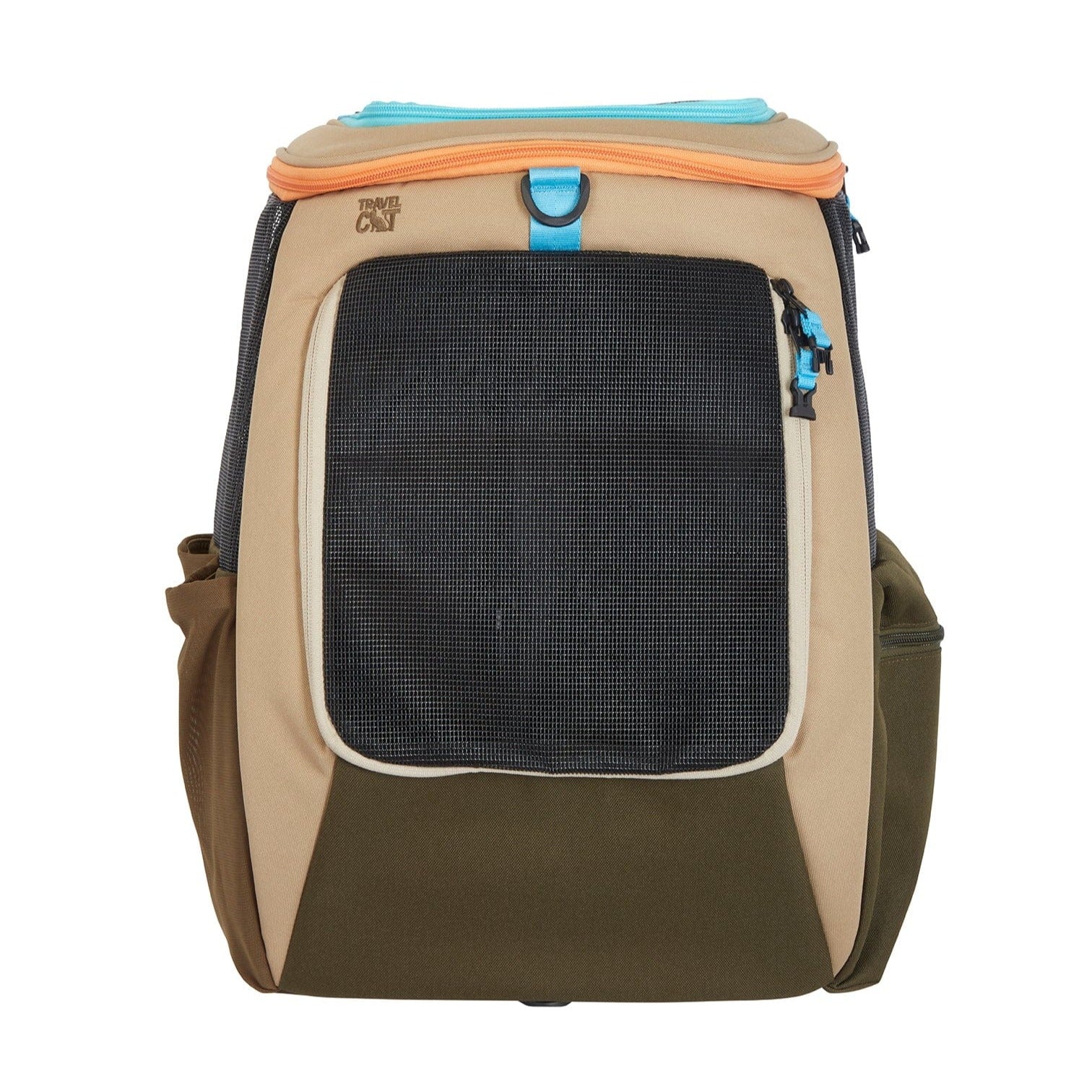

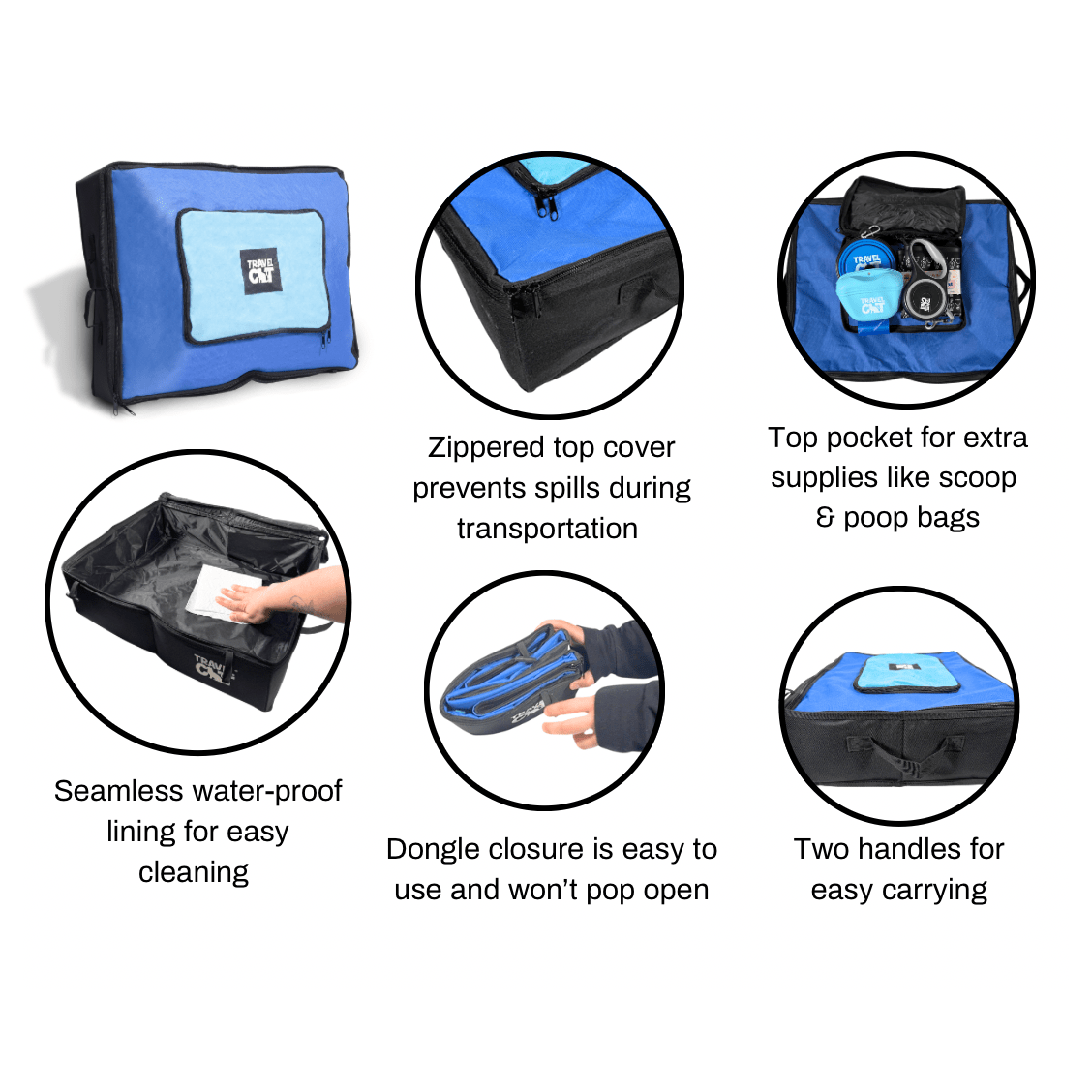
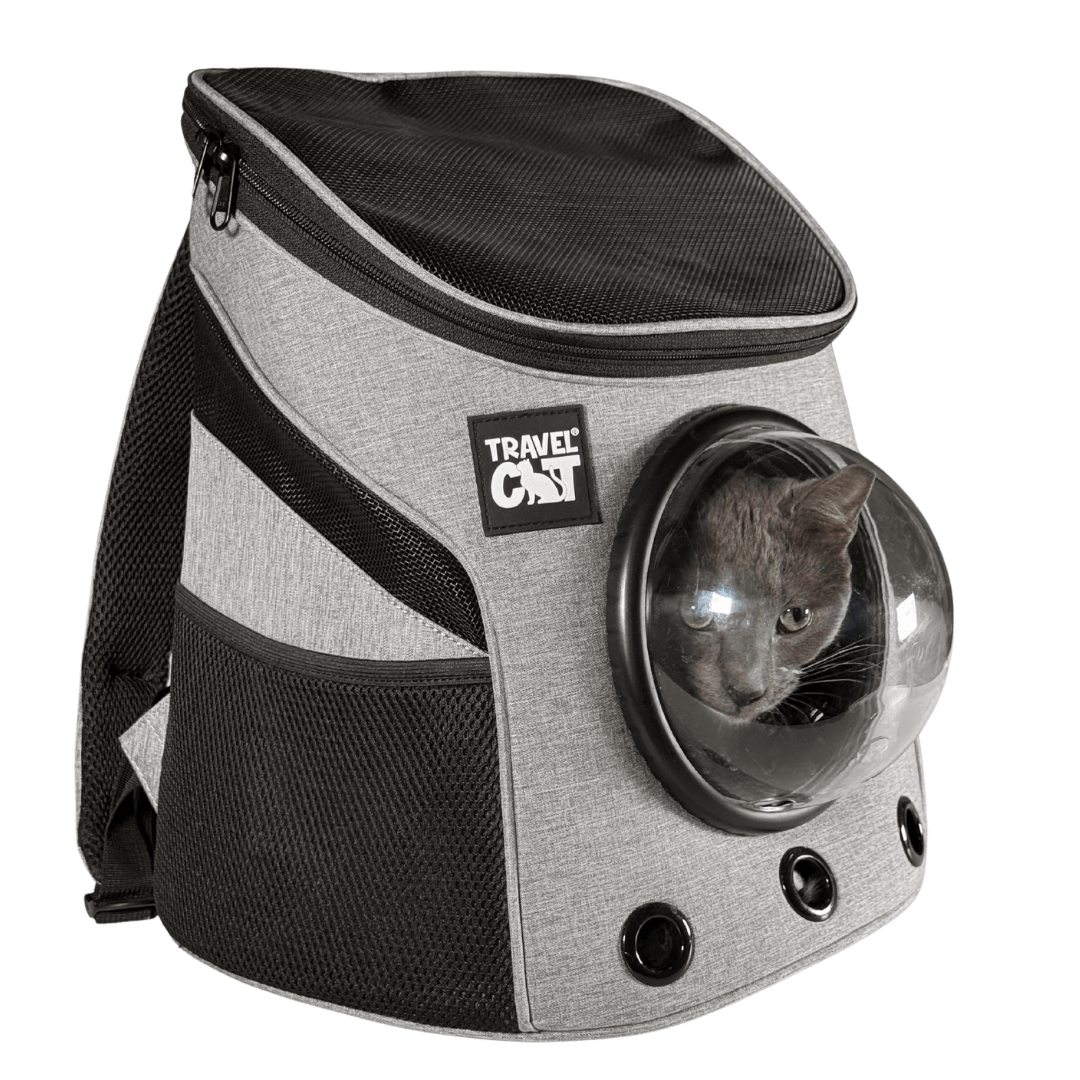
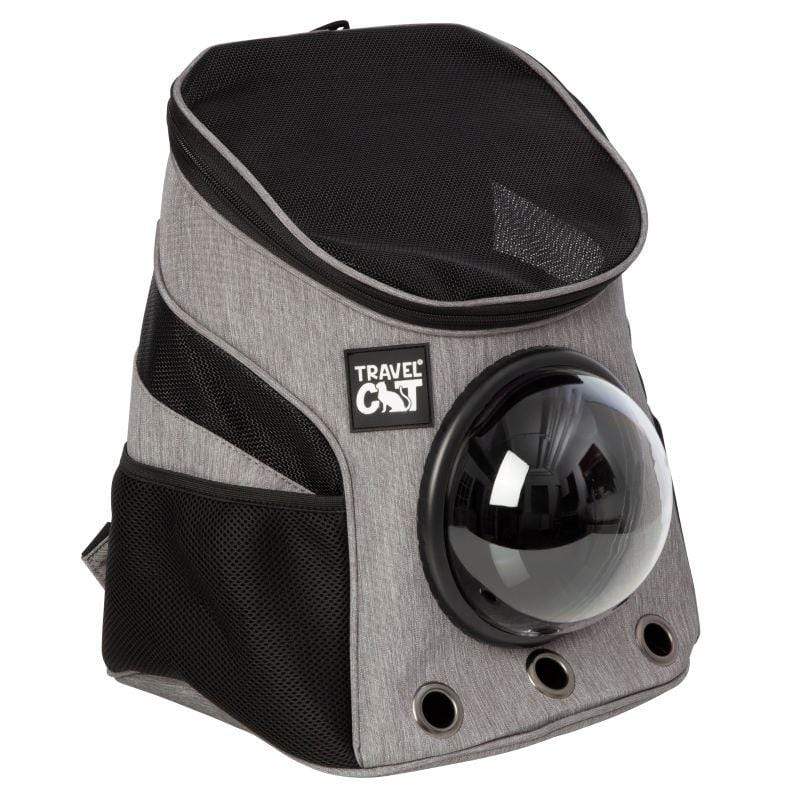
20 comments
Male Maine coon 6 months old – is the harness adjustable as he grows? Do I use the chest measurement now and then refer to the chart?
Morris Jacobs
Does anyone need cabinets installed?
Cabinet Guy
I like cabinets :3
<
: 3
<
Cabinet
Oh My God!!! This is a great blog, I am happy that I have come across this one. It’s an amazing blog to read. Thanks for this wonderful content.Best Cat in Bangalore | Kittens in Bangalore
Cat Exotica
Hi! I just had a question regarding leash walking cats. I have two – is it reasonable to (eventually of course) take more than one cat out on leash at a time? Obviously, people with multiple dogs do this all the time but I was curious if there is a reason you wouldn’t want to take two (or more) cats on leash on a walk together, assuming they are both at the point of being comfortable with leash walks. Thanks in advance!
Emily
How long
does
it take to train the cat?Ilmu Komunikasi
I have harness trained my kitty for indoors, but she is scared outside. She loves to look out doors and windows, so I thought it would feel more secure to be in a backpack attached to catmom. My problem is getting her to go in it. It has a manufactured plastic smell and I think she gets claustrophobic when she retrieves treats from it. She will get treats out when I remove the bubble and she is hungry, but only if I am not watching. I fear the backpack may be too small for her, but I can’t tell if she won’t get in it. I got a Fat Cat Mini and she is 10 pounds and wears size S harness. It looks like it should be a good fit when she curls up, but she is more of a percher than a caver, so how do I get her in it? I maybe should have gotten the big backpack so she can stretch out, but she won’t get in it anyway.
Vicki
Great Blog ! Really,I like your blog so much and thanks to share this wonderful tips cat harness training & best cat harness product. it was very informative and helpful, Thanks !!
julia smith
cheap cialis online[/url]
assault
Julia Smith Rogers
Mark Lanegan Duke Garwood Black Pudding [url=https://mp3bump.info/jimmy-mccracklin-the-bridge-whats-that-pt-1.html]Jimmy McCracklin The Bridge Whats That Pt 1[/url] The Pink Floyd Lucy Leave King Bee
JamesRek
Newcleus Jam On It [url=https://mp3bump.info/death-grips-bottomless-pit.html]Death Grips Bottomless Pit[/url] Dead Kennedys Plastic Surgery Disasters
JamesRek
George Duke I Love The Blues She Heard My Cry [url=https://mp3bump.info/the-new-lee-dorsey-working-in-the-coal-mine-holy-cow.html]The New Lee Dorsey Working In The Coal Mine Holy Cow[/url] Kate Bush Never For Ever
JamesRek
How many hours a day can the cat wear the harness? Like all the time when your are traveling? Seems like it would be necessary to have it on them and maybe even the leash to be sure they dont’ escape somewhere that is unfamiliar to them.
Ginnie
Can you please advise the sizes of the cat vest. I am not sure whether to choose medium or large. Our cat, newly adopted, is overweight and measures 40cm around her chest. Many thanks.
Cheryl Thwaites
Where do I find the sizing chart for your true adventurer cat harness
Amie
Muchas gracias. ?Como puedo iniciar sesion?
chbpofknup
] Amoxicillin 500mg udo.zqua.yourcatbackpack.com.mtc.wg http://mewkid.net/when-is-xuxlya3/
ewyixugadix
umukaeh
This is really great!! Everyone should get one of these backpacks, would make traveling with our fur babies so much easier. I also, picked up some great tips on how to treat your cat for the backpack and so I thought it would be helpful as well to checkout this book from the mom of 20 adorable cats, on how to treat and train your babies. I’ll link it here:
Jovine Bailey
Leave a comment
This site is protected by hCaptcha and the hCaptcha Privacy Policy and Terms of Service apply.